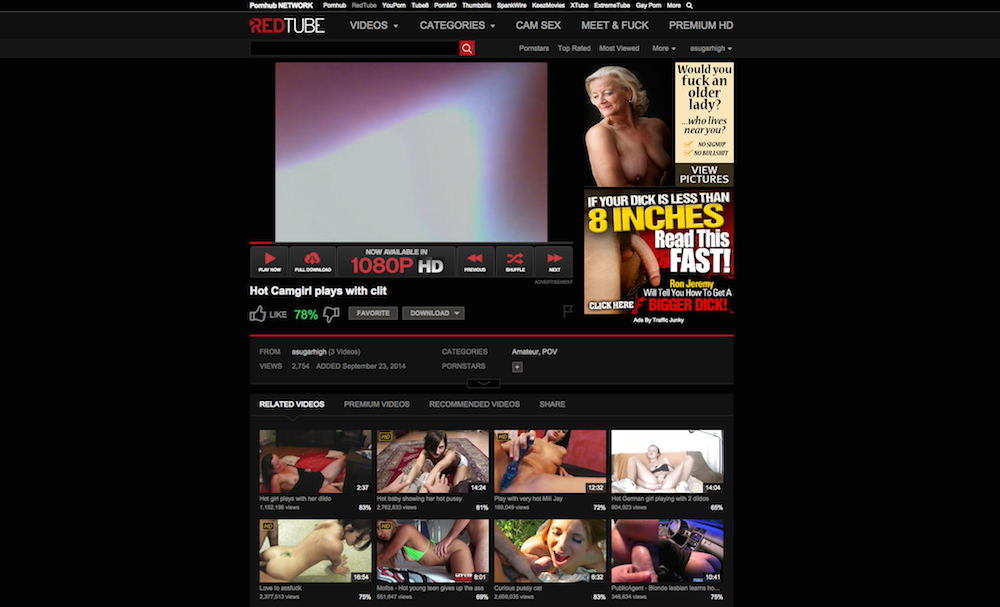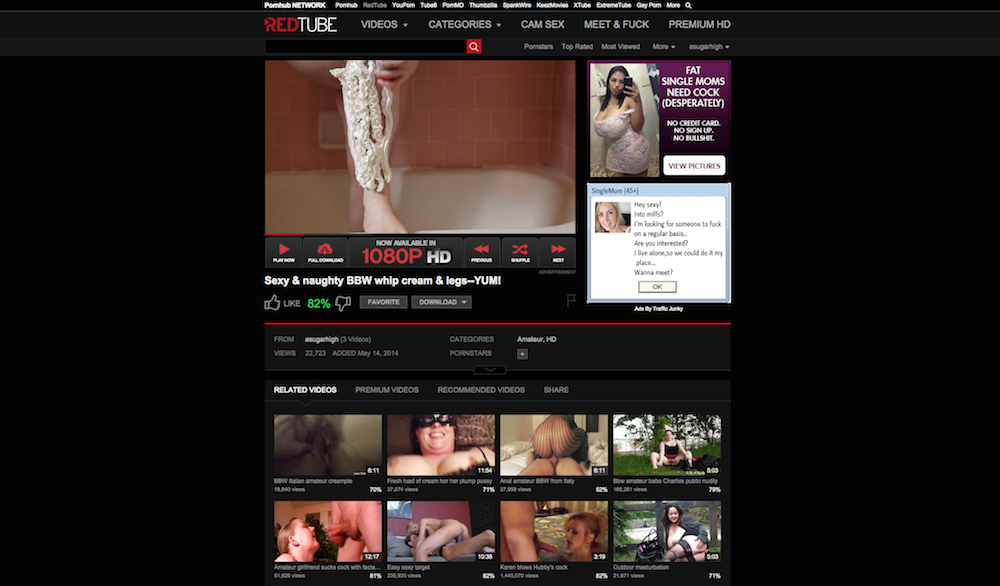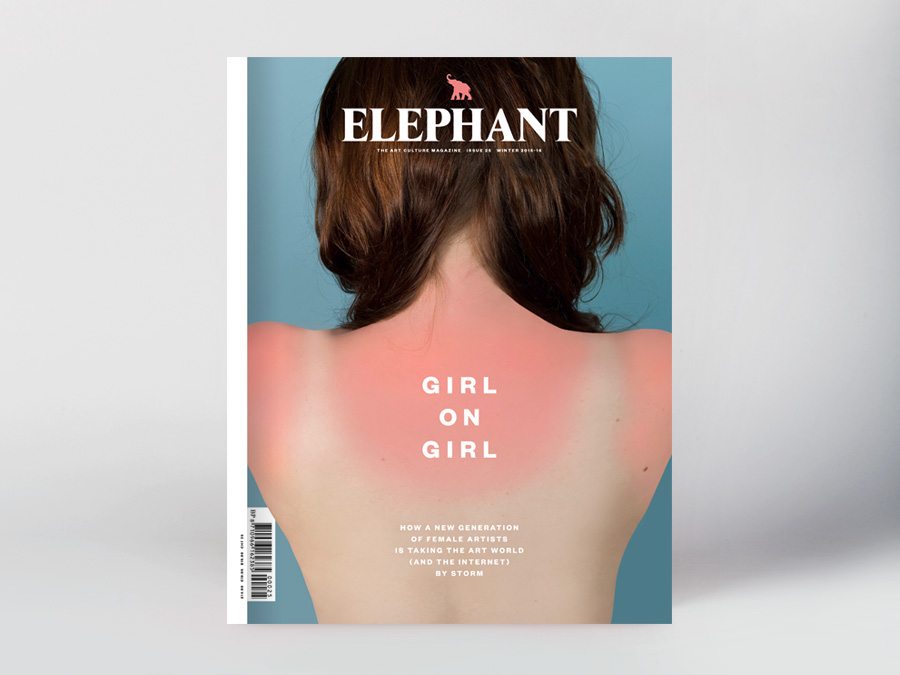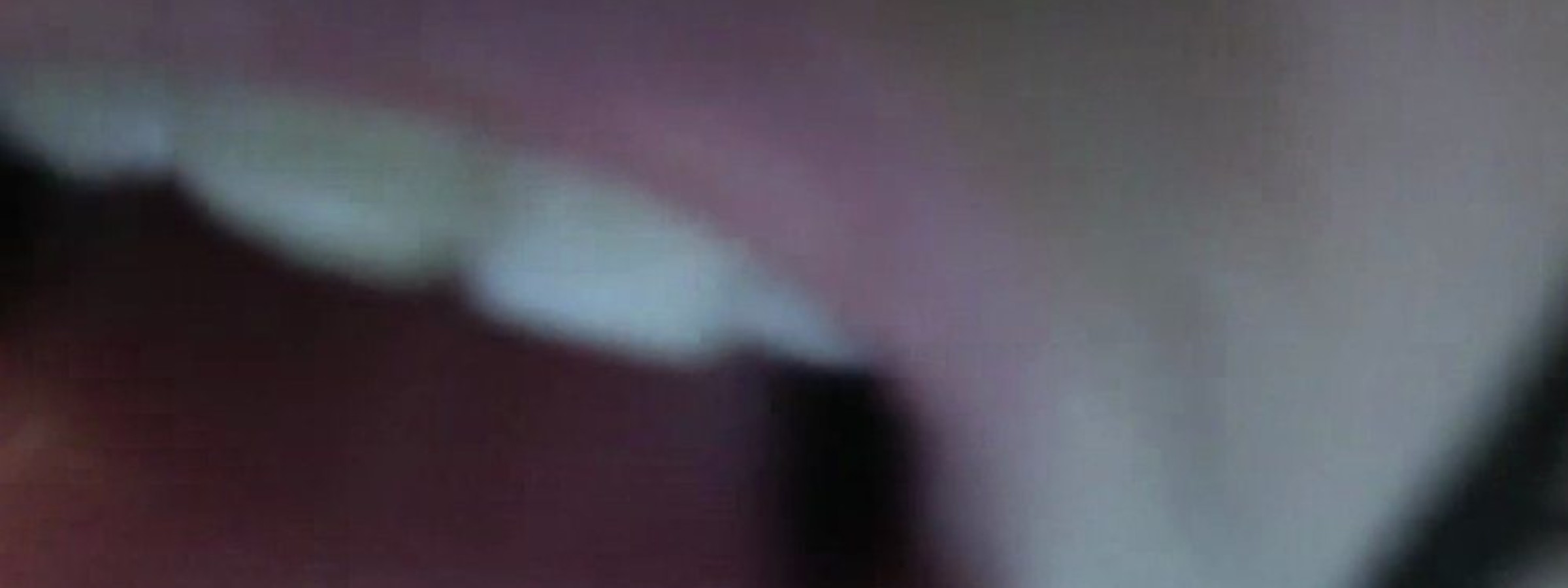
Note: this feature originally appeared in Issue 25 of Elephant.
Your work connects our current consumption mode (technology) and its effect on our social and sexual interaction. What kind of space do you think online and amateur porn has created for women—and for men?
Obviously pornographic production is more dispersed now; the threshold between oneself and mainstream porn consumption is the lowest it has ever been. You can use a cell phone to create and upload a video, enter the stream and suddenly have 10,000 views. I’ve done it with a webcam for my series Porn Interventions. But what’s interesting about those low barriers is the way that amateur pornography tends to mimic the tropes of larger productions— whether in terms of choreography or acting— and, in turn, production companies aspire to appear more ‘real’ like amateur porn. Having sex for a camera and authenticity seem, in some ways, diametrically opposed.
Susan Gubar has written about the ‘ghettoization’ of pornography as being the underlying problem with it rather than porn in and of itself. Do you think changing the kind of pornography we watch or the way we consider porn in general (as obscene, dirty) can bring about social change?
I do like to think so and it’s a motivating factor behind a lot of my work. Americans in particular, I think, have a truly odd relationship to sexuality—pornography is simultaneously massively consumed online, composing a significant portion of web traffic, and completely taboo. It’s socially acceptable for a nearly naked woman to sell beer, but not to pleasure herself. I think banning pornography (which now seems like a quaint pre-web idea) or even posing it as ‘evil’ or ‘bad’ is futile. It is infinitely more productive to think about consuming pornography that depicts equal sexual partners, values bodies of different shapes, sizes and colours, proposes non-violent, non-degrading sexual pleasure, etc. etc. etc. But these issues are infinitely harder to attack when the entire genre is considered dirty and valueless.

I feel in visual culture and porn now the approach has become almost ethnographic, which exposes those classifications of body types. But you use humour, and sometimes pathos, to depict our current sexual state.
Humour is such a useful tactic and I love to deploy it in my work. I’ve found that I can express fairly aggressive statements like ‘pornography is centred around male pleasure’ and humour allows men in particular to engage in that conversation rather than be put off. It’s also allowed my artwork to infiltrate mainstream pornographic publications even when I’m not uploading it directly to RedTube. Ookie Canvas
was in a popular Colombian nudie mag and Visual Orgasms was featured on a French porn culture site along with selections of a show I curated called GIFs to Have Sex By. For me, that audience is really exciting because it is precisely not the choir; it is the audience I pursue with Porn Interventions and now it is coming to me.







